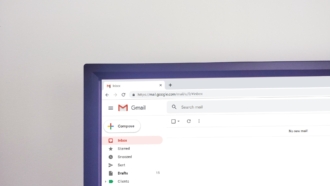How many times have you signed up for new software, bought a product, or paid for a service only to be confused or annoyed by how much you still don’t know after getting your first “welcome” email?
If it’s happening to you, there’s a good chance it’s happening to the buyers of your products and services too.
That’s precisely why the customer onboarding process is so important.
Your product or service might be amazing, but if your customers don’t feel confident using it because your onboarding process is weak or nonexistent, they’ll be disappointed — and some will abandon the product altogether. When that happens, you’ll lose what could have been a happy, loyal customer who sings your praises far and wide.
Essentially, your customer onboarding process can make or break the customer experience.
What is customer onboarding?
Customer onboarding is the process each new client or customer goes through to get familiar with and learn how to use your product or service after clicking the “buy now” button, signing a contract, or otherwise committing to a purchase from your company.
Put another way, customer onboarding involves introducing new customers to your product through support and tutorials.
Depending on what you sell, the customer onboarding process may include a welcome email plus a nurture sequence (or follow-up sequence) with step-by-step instructions on how to use the product, detailed video tutorials or product tours, one-to-one guidance from someone on your team, and check-ins and support along the way.
Benefits of an effective customer onboarding process
An effective onboarding process that starts the moment someone makes a purchase helps ensure customer satisfaction and build brand loyalty. Showing your customers how to use your product or service and demonstrating its value up front decreases churn and improves retention.
An effective onboarding process can also reduce customer support inquiries. If customers are getting a solid overview of everything they need to know to use your product or service successfully, they’ll have fewer questions and be less likely to contact the customer support team.
If your onboarding process leaves no customer behind, customers can get a “win” quickly, increasing the chances they will feel confident using your product or service and become a lifetime customer.
A solid customer onboarding process can set you apart in your industry and help you become the “one they choose” when potential customers compare your company to your competitors.
Great customer onboarding results in happy customers, and happy customers will become customers who buy from you again and share the good word with their network. As a result of all of the above, your bottom line will likely improve.
7 best practices for creating a quality onboarding process
Here’s a list of best practices to consider when creating your onboarding process for new customers:
1. Use software where applicable
Using software will simplify the collection of new customer information, including getting signatures or customer consent.
2. Gather customer data
Corral your customer info in one place so you can keep track of onboarding tasks for each customer and check off each item as you complete it.
This free online customer onboarding template from Jotform allows you to enter information about customers into a table manually, or you can set up a new customer registration form that automatically adds submission data to the table.
3. Understand customer expectations and success benchmarks
Create a process for gathering information about your customers’ expectations and the benchmarks they use to define success. What are their goals with respect to your product or service? What’s a quick win they’d like to achieve? What’s their most desired outcome?
This knowledge will help you direct customers to the appropriate onboarding assets so that they can get the results they want. Depending on the customer goal, you can direct users to exclusive content, mini training sessions, or special FAQs specific to their needs.
4. Communicate early and often
No matter what your onboarding process looks like or how easily users seem to be working their way through it, it’s important to check in with your customers consistently. Let them know your team is available should they have any questions.
Share information about where and how they can reach out if they need further guidance, or send them emails with additional tutorials and guides they may find useful. Availability like this goes a long way toward a happy onboarding experience.
5. Focus on the relationship
The onboarding process is about more than simply helping users master the features of your product or service. Let your customers know you’re available to support them in achieving their goals, that their success is your success, and that you’re all on the same team.
Surprise them with an unexpected one-to-one check-in, ask about their progress, and share additional resources. There are many ways to go the extra mile that will engender trust and customer loyalty.
6. Stay in touch after onboarding is complete
Keeping in touch with customers after they’ve completed the onboarding process will earn you lots of customer loyalty points. Check in on their progress, ask if they have questions, and help them determine what’s next to help them achieve their goals.
Be sure to share channels for reaching out to the customer support team or other appropriate internal team. If it seems organic at this point, you can even communicate the next logical choice in your product suite they might want to try.
7. Ask for feedback
Even if you think you’ve executed each of the above best practices perfectly, it’s still important to ask for customer feedback. There may be friction points you’re not aware of, obstacles you didn’t foresee, or challenges that may surprise you.
This data is golden for improving the customer experience and creating an even better customer onboarding process. Optimizing the customer experience based on reliable feedback is vital to remaining competitive in your industry.
Whether you’re instituting a customer onboarding process for the first time or optimizing your current one, you can use the best practices above to create an amazing experience for your clients and customers. When you set your sights on an onboarding strategy that results in happier, more confident customers, you’ll also enjoy greater business success.














Send Comment: